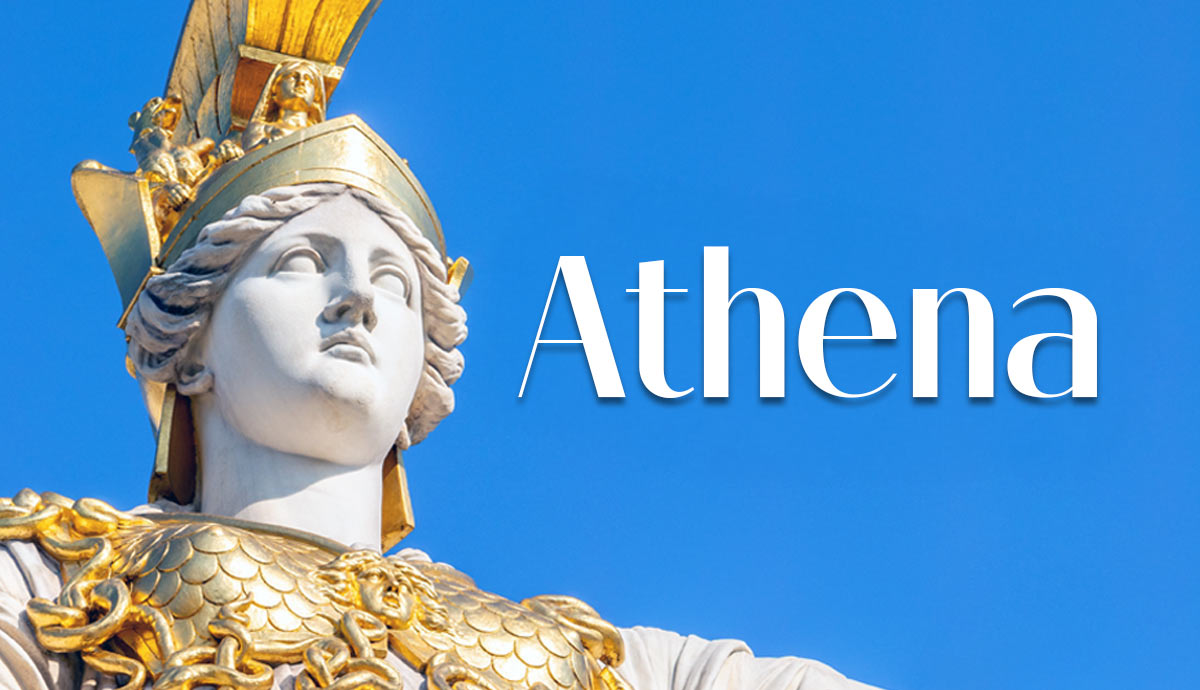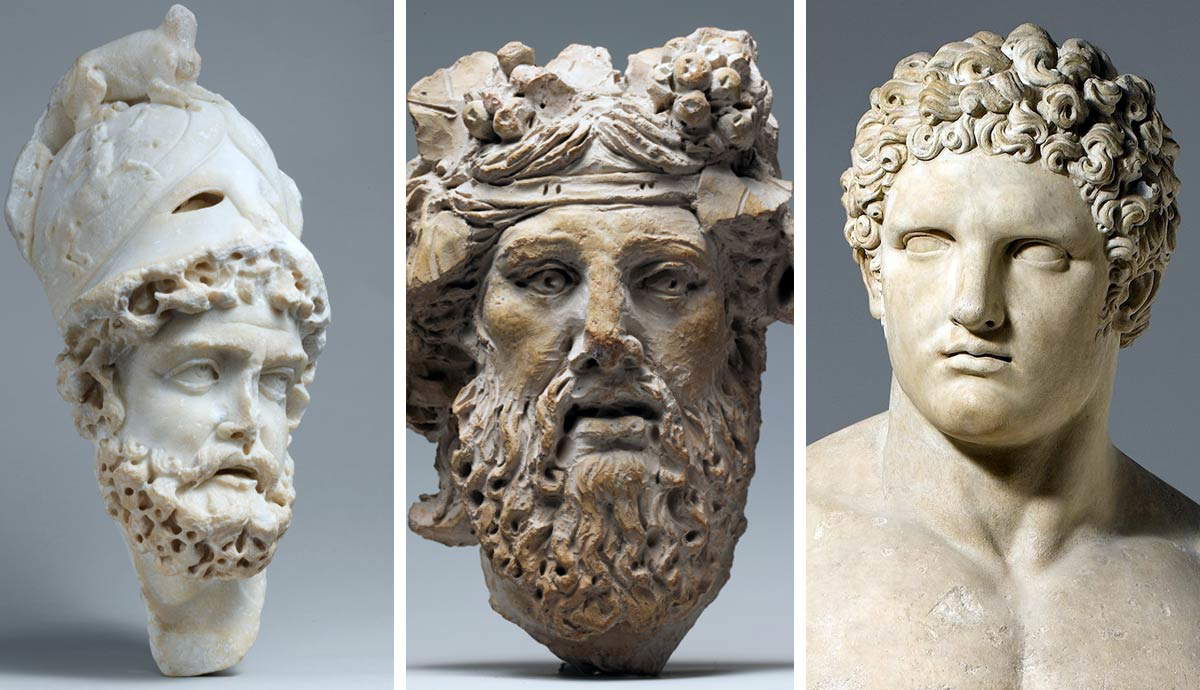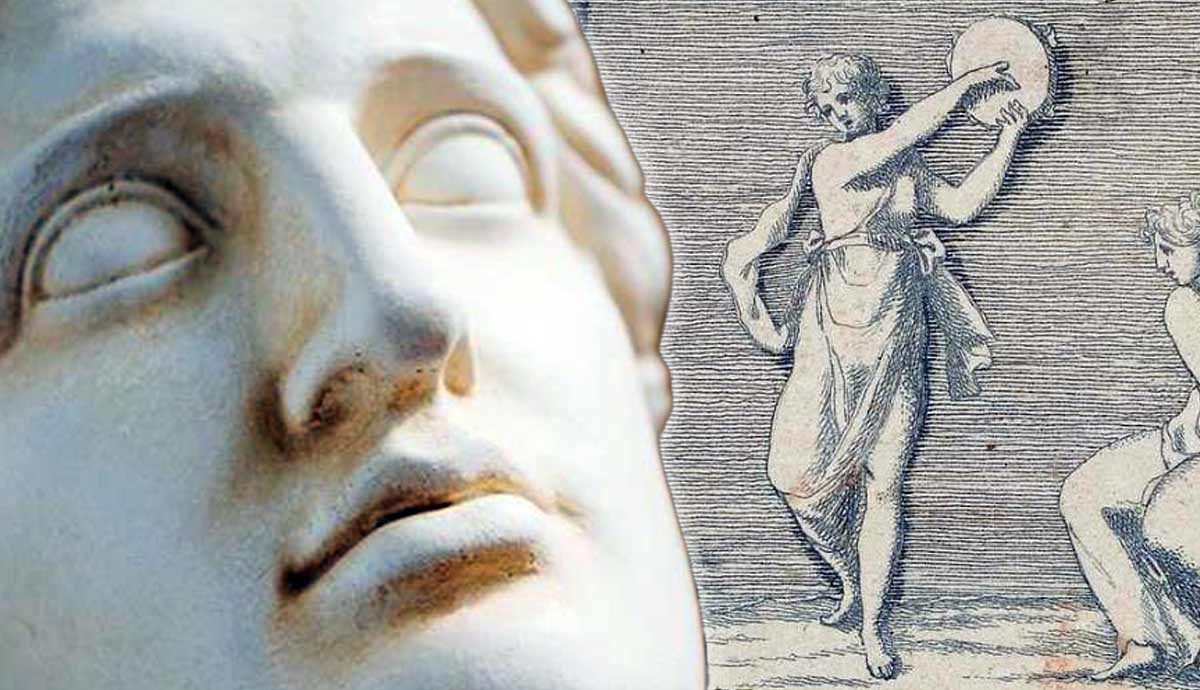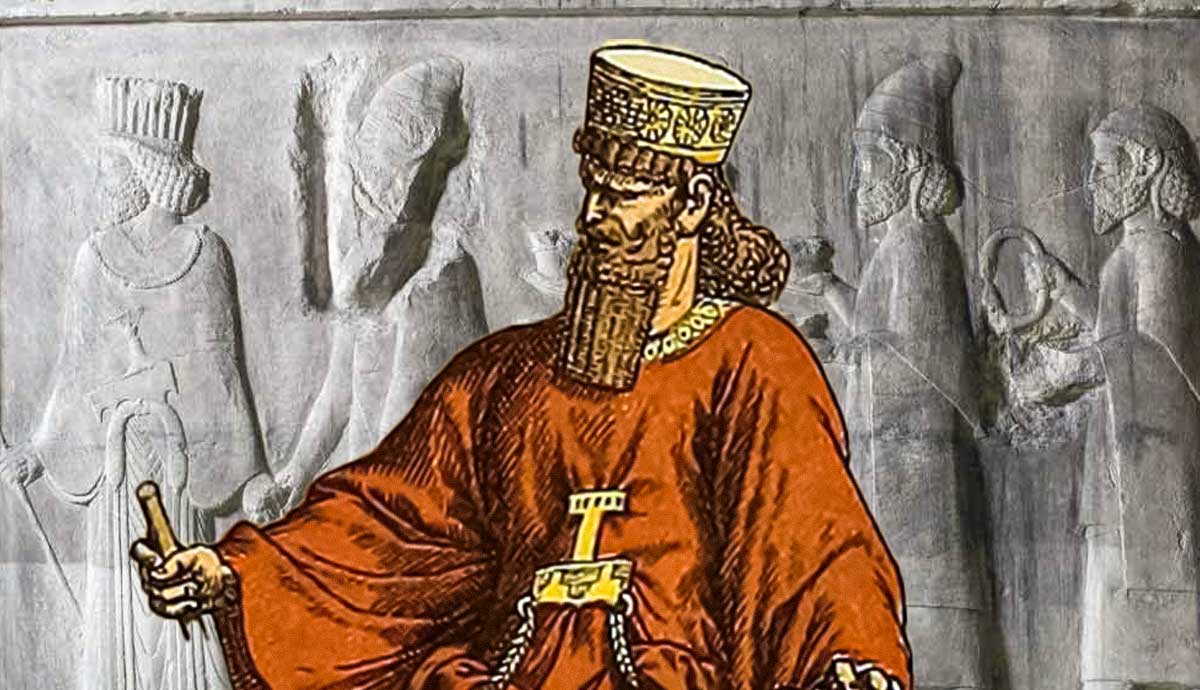
Athena was one of the most beloved and complex gods in the Greek pantheon. She was an arbiter of justice and the goddess of war, a patron of peaceful crecountedrafts and protector of the state. To modern audiences, she is best known as the goddess of wisdom, yet this association was not part of her earliest identification and instead developed over time. By looking at her mythology and symbolism, we can better understand what the goddess meant to her worshipers and how she evolved to embody the ideal of wisdom and intellect. Read on as we explore the question: who was the goddess Athena?
Quick Facts About Athena
| Domains | Wisdom, strategic warfare, crafts (mainly weaving and pottery) |
| Parents | Zeus and Metis |
| Birth | Emerged from Zeus’s head |
| Symbols | Aegis, gorgoneion, distaff, spear, armor |
| Sacred Plant | Olive |
| Sacred Animals | Owl, serpent |
| Key Cult Site | Acropolis of Athens |
| Most Important Festival | Panathenaea Festival (Athens) |
| Other Names | Pallas, Tritogeneia |
| Roman Equivalent | Minerva |
Athena’s Centers of Worship

Athena was worshiped all over the Greek world, from Athens to Sparta, and even in Troy across the Aegean Sea. But by far her most important cult site was the Acropolis at Athens. On the Acropolis there were several temples dedicated to her worship. The eldest was the temple to Athena Polias, simply called the Old Temple, archaios neos, in ancient records. This temple housed a wooden cult image of the goddess, which was the most sacred image of her on the entire plateau. The wooden statue was one of the only things saved by the Athenians when the Persians sacked the Acropolis in 480 BCE. Everything else was burned to the ground.
The statue of Athena Polias was ancient even to the Greeks. The local legend was that it fell from the sky or had been constructed by the founding kings of Athens. The statue, which was draped in a newly woven peplos every four years, was the focal point of the Panathenaea festival. This festival was a celebration of Athena that consisted of sporting competitions and religious ceremonies, culminating in a grand procession through the city to the top of the Acropolis and the gifting of a new peplos, the traditional dress of the archaic woman, to Athena. The ritual significance of the peplos demonstrated Athena’s mastery over weaving and was a symbol of her sovereignty.

After the Persian sack, the Athenians undertook an extensive building program, headed by Pericles, that saw the Acropolis rebuilt and renewed. The Old Temple of Athena Polias was rebuilt as the Erechtheion, where several cult sites were consolidated under one roof. These were the sanctuaries of Erechtheus and Pandrosos, the tomb of Cecrops, the sacred olive tree of Athena, the saltwater pool of Poseidon, and the temple of Athena Polias.
The Parthenon was rebuilt on the site of a previous Parthenon, but updated with impressive friezes above the peristyle columns that depicted the Panathenaic procession. Inside the temple was a 30 foot gold and ivory statue of Athena Parthenos holding a small idol of the goddess Nike. This statue, made by the famed artist Phidias, was considered one of the wonders of the ancient world.
How Was Athena Born?

According to the oldest version of her birth, recounted by 7th century BCE poet Hesiod in his Theogony, Athena was born from the head of Zeus. The king of the gods received a prophecy that he would have two children by the goddess Metis. The first a daughter, and she would be equal in power and wisdom to her father. The second would be a son who would have an “overbearing heart” and would be king of gods and men. In order to prevent being overthrown in the same manner as his grandfather, Ouranos, and his Titan father, Cronus, Zeus swallowed Metis while she was pregnant with their daughter.
Zeus later gave birth to Athena from his own head on the banks of the river Triton, which is why Athena is sometimes called Tritogeneia. Other version elaborated on the birth, having either Prometheus or Hephaestus striking Zeus on the head with an ax, releasing Athena from his skull, fully armed and armored.

Metis was the goddess of knowledge and morality, representing both the knowledge of kings and the state, as well as the technical knowledge of craftsmen. Zeus possessed the former, and gods like Prometheus, Hephaestus, and Hermes possessed the latter. The latter knowledge has also been defined as “creative ingenuity” and was a force of cultural renewal. This is the type of knowledge that Hesiod believed to be a threat to Zeus’ rule. This can be seen by the Prometheus myth earlier in the poem. Prometheus’ actions in the myth are tantamount to rebellion against Zeus. He goes against Zeus’ will and his knowledge as king of the gods, using his own knowledge and craftiness to counter it. This is the type of threat that Athena and her unnamed brother represented to Zeus’ rule.
The significance of Zeus swallowing Metis was that it removed the threat Athena posed to his rule and made her subservient to him. By being born from Zeus’ head rather than naturally by Metis, her connection to Metis as a mother was distanced and her sole parent became Zeus. It is also worth noting that when she emerged from his head, she didn’t emerge as a goddess of crafts or of wisdom, but fully armed and armored as Pallas Athena, goddess of war.
Athena’s Role in Mythology

Athena was one of the most active deities in Greek mythology, owing both to her status as favored daughter of Zeus and to her importance in state and secular life. She most often acted as a patron of heroes, providing them with advice, instilling them with strength, or gifting them magical objects to aid in their quests. The most obvious examples are her roles in the Iliad and Odyssey, aiding the Greek war effort and helping Odysseus return home respectively. Outside of epic poetry, she was involved in the myths of Perseus, Heracles, Bellerophon, and was said to be the mother, or foster mother, of the legendary king of Athens, Erichthonios. She could also be as vengeful as the other gods, such as when she savagely beat Arachne and then transformed her into a spider after their weaving contest.
The opinion that Athena had always been a goddess of wisdom comes from the fact that she was born from the head of Zeus. To a modern audience this would seem to obviously imply intelligence, yet this takes for granted a modern understanding of anatomy. To Homer and his audience,the head was not understood to be the seat of cognition. It was instead thought to contain material for procreation, so there was no connection between her birth and her association with intellect. Athena was also described as sophos, which now has a more general meaning of wisdom, yet originally the word connoted “skillfulness,” such as in crafts. It only later became linked to general intelligence.

In the Iliad, Athena was presented mainly as a war goddess. Though more prudent than Ares, she hardly showed the characteristic wisdom with which she was eventually attributed. Many of her actions were at the direction of Zeus or Hera. The only actions that belonged solely to herself were those involving military affairs. In the Iliad, Athena is not associated with cleverness and has no epithets that indicate that facet of her personality, yet Odysseus did. Her reputation for wisdom developed out of her patronage of Odysseus in the Odyssey, and it is only there that we see Athena’s cleverness take center stage.
In the epic she often tests and deceives the other characters, acting as a foil to Odysseus, who uses his own cleverness to overcome the challenges faced on his journey home. It is through the characterization of Odysseus as the most clever of the Greeks and Athena’s presentation as being greater than him in knowledge and cleverness that she acquired her image as a goddess of wisdom.
Athena’s Symbols

Athena’s complex identity can be seen through the many symbols associated with her. She was not just a war goddess or goddess of wisdom, but also a goddess of fertility, life, death, fate, and had some prophetic aspects. All these symbols naturally complement each other and paint the picture of a goddess inextricably entwined with all aspects of civic life.
Athena was likely initially conceived of as a fertility goddess. Her epithets potnia, despoina, and medousa, meaning “Queen,” “Lady,” and “Mistress” respectively, are all epithets commonly used for fertility goddesses like Demeter and Ge, or Gaia. In Elis they worshiped Athena Meter, or “Mother,” and claimed that she was responsible for the fertility of the women in the city. In Athens, when a girl was about to be married she was led up to the Acropolis and a sacrifice was made to Athena for the fruitfulness of the marriage. After the marriage the priestess of Athena Polias would carry the aegis of the goddess to the new couple’s home, a custom that was supposed to promote fertility. Furthermore the cult statue of Athena Polias in Athens, the earliest know and most sacred image of the goddess, was thought to be holding a phiale, a type of saucer meant for libations. This symbol was also common with images of Ge.

The phiale was also associated with death. In Homeric times it was used as a funerary urn, and there are depictions of Athena with a phiale in Attic tombs. To further emphasize her association with death, the statue of Athena Nike represented her holding a pomegranate, which was also a common symbol of the underworld. This association is best exemplified by the myth of the abduction of Persephone. The pomegranate grew in the garden of Hades and was the fruit which Persephone ate that bound her to live in the underworld for a third of every year. The pomegranate was also associated with rebirth. This symbol of death and regeneration naturally complements Athena’s role as a fertility goddess, and also implies her power over both life and death.
Another common symbol of Athena was the olive. The association comes from the myth of a contest between Athena and Poseidon for patronage of Athens. Each god offered the citizens a gift. Poseidon slammed his trident into the earth and from it sprouted a salt water spring. Athena gave them an olive tree. Seeing Athena’s gift as more beneficial, the people chose Athena to be their patron. An olive tree, thought to be the same one planted by Athena, grew beside the Erechtheion on the Acropolis. This olive tree was known as the “Citizen Olive,” and was in essence a citizen of Athens.

In the garden of Academos, the olive trees planted there were said to come from this tree and they were inspected monthly to ensure they were in good health. These trees were owned by the state and named moriai, derived from the word moros or moira, meaning “fate.” They were also under the protection of Zeus Morios and Athena Moria, “The Fateful.” Athena has other connections as a goddess of fate, which will be explored below, but it is clear that the olive tree was the life blood of the city of Athens. It was said that the “Citizen Olive” was burned when the Persians razed the Acropolis in 480 BCE, but when the Athenians returned to assess the damage a new shoot was sprouting from the burned remains, signifying the survival, and rebirth, of the city.
In connection with fate, Athena was known to be a master seamstress and was often depicted holding a spindle. The obvious association is with weaving and crafts, but there were other deities that were also defined by their relationship to weaving, and these were the Fates. The Fates were said to spin a person’s destiny from the moment they were born and bestow both good and evil. This brings some deeper significance to the weaving and presentation of a new peplos during the Panathenaea, as Athena could be said to literally weave the fate of the city. The concept of weaving and fate are so intertwined that the gods were said to “spin” people’s destiny. Even today weaving is a common metaphor used when describing fate.

Athena was also associated with specific animals like the snake and owl, both animals that signified wisdom and prophetic knowledge. The snake symbolism is present in the story of the legendary king of Athens, Cecrops, who was said to have a serpent’s tail. His daughters were also the nurses for another snake-man who was the foster son of Athena, Erichthonios. Like Cecrops and Erichthonios, snakes were regarded as children of Earth, and also had associations with the underworld. There was known to be a sacred snake that was kept on the Acropolis at Athens, and if it ate the food that was fed to it each year that would indicate a fruitful year. Elsewhere in myth we see the snake symbolism used in connection with prophecy, such as in the myth of Apollo slaying the serpent Python who guarded the sanctuary at Delphi.
Owls are the most common animal associated with Athena and she was often depicted with one on her shoulder. The owl was known for its wisdom in ancient times, as it is today, yet it too was often used to symbolize death. Its imagery was used on gravestones and vases to signify death, and in literature its cry was a portent of doom.

From all this we can see that Athena was far more than a goddess of wisdom. Her patronage of heroes as well as her mastery of human crafts depicted her as a civilizing force. Her symbols and mythology reflect a goddess who evolved alongside the society that worshiped her. From a goddess of fertility and war, Athena’s technical skill and strategic intelligence eventually transformed her into the ideal of wisdom and prudence. A legacy that has lasted throughout millennia.
Select Bibliography
Brown, N. O. (1952) “The Birth of Athena,” Transactions and Proceedings of the American Philological Association, 83, 130–143.
Doherty, L. E. (1991) “Athena and Penelope as Foils for Odysseus in the “Odyssey”,” Quaderni Urbinati Di Cultura Classica, 39(3), 31–44.
Ferrari, G. (2002) “The Ancient Temple on the Acropolis at Athens,” American Journal of Archaeology, 106(1), 11–35.
Gerding, H., & Gerding, H. (2006) “The Erechtheion and the Panathenaic Procession,” American Journal of Archaeology, 110(3), 389–401.
Kousser, R. (2009) “Destruction and Memory on the Athenian Acropolis,” The Art Bulletin, 91(3), 263–282.
Luyster, R. (1965) “Symbolic Elements in the Cult of Athena,” History of Religions, 5(1), 133–163.
Pope, M. W. M. (1960) “Athena’s Development in Homeric Epic,” The American Journal of Philology, 81(2), 113–135.










